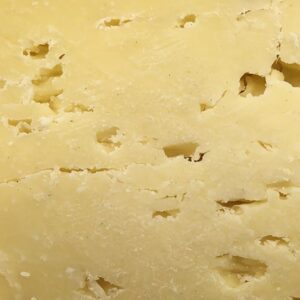JANE AUSTIN – EMMA – Chapter Ten
“Mr. Elton was still talking, still engaged in some interesting detail; and Emma experienced disappointment when she found he was only giving his fair companion an account of the yesterday’s party at his friend Cole’s and that she was come in herself for the Stilton cheese, the north Wiltshire, the butter, the celery, the beet-root and all the dessert.”
What is the significance of these cheeses? Why was serving them an impressive indication of wealth in Mr Elton’s eyes? Both cheeses were highly prized regional cheese and it would have been additionally expensive for the Coles to purchase them in Highbury in Surrey.
The North Wiltshire, commonly called Wiltshire Loaf, was very popular over the centuries, made from the milk of the dairy cows fed on the rich grazing found on the low lying clay soil of North Wiltshire. This land, unlike the chalk soils in the south of the county, was unsuitable for arable hence the expression “chalk and cheese.”
In the seventeenth century, a cheese factor, John Skull, was operating here from Hill End Farm in Brinkworth, North Wiltshire both making his own cheese and buying in cheese from neighbouring farms to sell on. The cheese must have been valuable and the business very profitable as he left a fortune in his will of 1679. Could Mr Cole’s cheese have  originated from Hill End a hundred and thirty years later? It was only made in North Wiltshire.
originated from Hill End a hundred and thirty years later? It was only made in North Wiltshire.
Although popular over many centuries, this cheese fell by the wayside during the last war when cheese making was discouraged, and its demise was also influenced by the rise of the ubiquitous cheddar cheese which was sold nationwide, rather than just regionally. The story would have ended there, if it hadn’t been for the efforts of Ceri, a biology teacher who had been brought up on Hill End Farm and now wanted to go cheese making instead of teaching.
As the farm had a history of cheese making, Ceri was keen to make the cheese her ancestors had made, and this was North Wiltshire Loaf. She was helped in her quest to find the recipe by Avice Wilson author of Forgotten Harvest, a history of Wiltshire cheese making.
Where can you buy North Wiltshire Loaf now, and where is it made?
It’s made at the same Hill End Farm in North Wiltshire.
Ceri’s grandfather had come to the farm in 1910, and descendants of his original cows are still grazing the farm today. Except for the purchase of 10 heifers and a bull in 1953, this herd has been closed for over a hundred years, breeding its own replacement cattle, rather than buying in. This greatly helps the provenance of the cheese.
Wiltshire loaf is a hard cheese. It is similar to a Gloucester type as we are neighbouring counties. It is a bright yellow colour rind which is very firm. The paste is pale straw yellow and very smooth. The aroma of daisies and cowslips gives hints of the farm background. It has a creamy mouth feel and a lingering mellow aftertaste.
Ceri had been making cheese for seven years when she was invited to attend the British Cheese Awards in Oxfordshire. I was privileged to accompany Ceri, and was beside myself with pride when Wiltshire Loaf won a gold medal and the award for the Best Territorial Cheese out of a hundred and one other territorial cheeses.
Wiltshire Loaf had come full circle. Ceri is the only person in the world who makes it, and her cows grazing on the rich pastures of North Wiltshire are the only cows in the world who produce it. This very old cheese has produced a whole new future for Hill End Farm.
To purchase the cheese visit Allington Farm Shop near Chippenham or buy online at brinkworthdairy.co.uk
Ro Collingborn